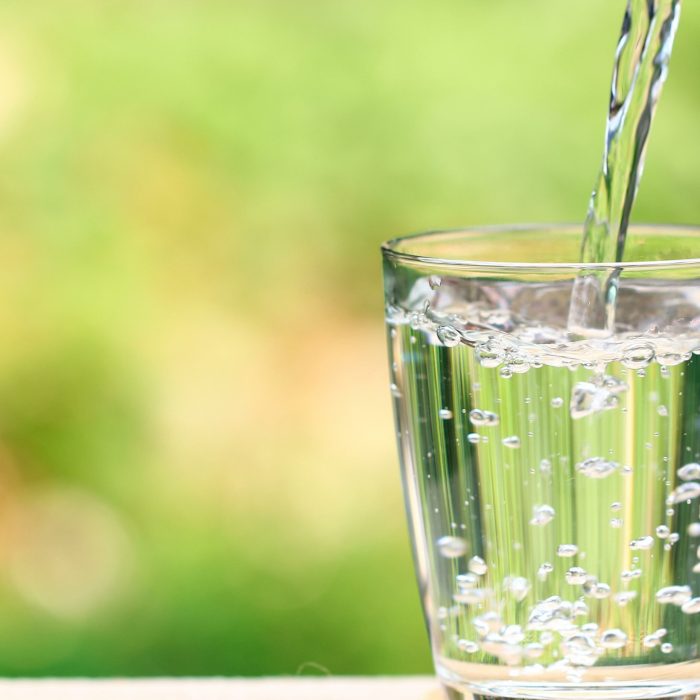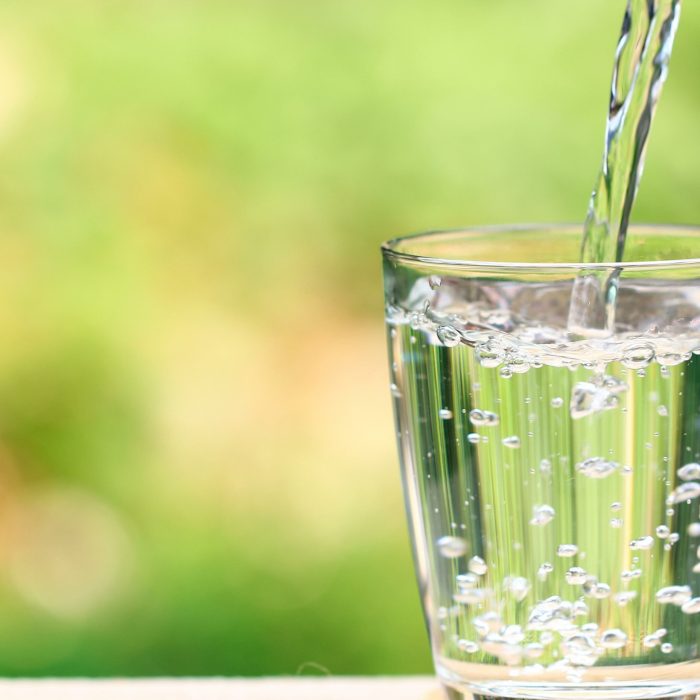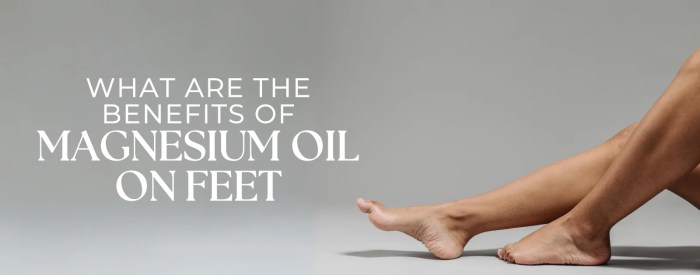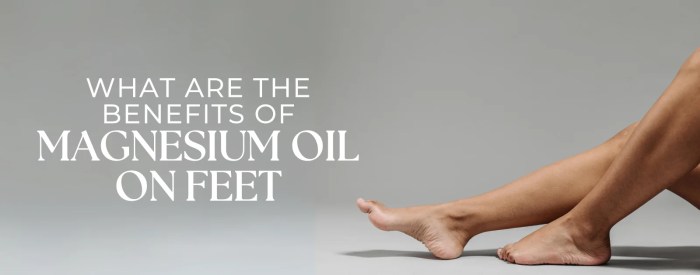How to get rid of peeling skin? This comprehensive guide delves into the various causes, home remedies, medical treatments, and preventive measures for this common skin issue. From understanding the different types of peeling to exploring dietary considerations and tailored skincare routines, we’ll cover everything you need to know to restore healthy, smooth skin.
We’ll explore the reasons behind peeling skin, from environmental factors to underlying medical conditions. We’ll also examine age-related differences in causes and discuss the specifics of various skin conditions that can lead to peeling. This will provide a solid foundation for understanding your particular situation.
Causes of Peeling Skin
Peeling skin, a common complaint, can stem from a multitude of factors. It’s often a sign that something is disrupting the skin’s natural barrier function, leading to dryness and flaking. Understanding the root causes can help pinpoint the appropriate treatment and preventative measures.Underlying medical conditions, environmental factors, and lifestyle choices all play a role in skin peeling. The reasons behind this issue can vary significantly depending on the individual’s age and overall health.
Factors Contributing to Peeling Skin
Various factors contribute to skin peeling. These range from seemingly innocuous environmental exposures to more serious underlying medical conditions. A thorough understanding of these factors is crucial in determining the appropriate course of action.
- Underlying Medical Conditions: Certain medical conditions can trigger skin peeling as a symptom. These conditions can range from relatively benign issues to more serious underlying health concerns. Examples include eczema, psoriasis, and allergic reactions. A dermatologist can help identify these conditions through proper diagnosis and treatment.
- Environmental Factors: Exposure to harsh weather conditions, like extreme cold or sun, can disrupt the skin’s moisture balance, leading to dryness and peeling. Similarly, excessive use of harsh soaps or detergents can strip the skin of its natural oils, resulting in dryness and peeling. Long-term exposure to dry indoor environments, such as central heating in winter, also contributes to skin peeling.
- Lifestyle Choices: Dietary deficiencies, inadequate hydration, and insufficient sleep can impact skin health. These lifestyle choices can negatively affect the skin’s natural ability to retain moisture, contributing to dryness and peeling. Excessive alcohol consumption, smoking, and stress can also contribute to skin problems, including peeling.
Age-Related Differences in Peeling Skin Causes
The causes of peeling skin can differ significantly across various age groups. Understanding these differences can help in targeted interventions.
- Children: In children, allergic reactions to certain foods, environmental allergens, or even irritants can cause peeling skin. Skin conditions like atopic dermatitis (eczema) are also prevalent in childhood, often presenting with dry, itchy, and peeling skin. Furthermore, contact dermatitis from substances like soaps or lotions can cause peeling skin.
- Adults: Adults experience a wider range of potential causes. These include chronic skin conditions such as eczema and psoriasis, which can worsen with stress or environmental changes. Furthermore, the effects of aging, including decreased skin elasticity and reduced moisture production, can contribute to peeling skin. In adults, allergic reactions to skincare products or environmental allergens can cause peeling skin.
- Seniors: In seniors, peeling skin may be linked to decreased blood flow to the skin, which can affect its ability to repair and maintain moisture. Age-related changes in skin elasticity and the reduced production of natural oils can also lead to dryness and peeling. Furthermore, certain medications taken by seniors can also contribute to skin dryness and peeling.
Examples of Skin Conditions Causing Peeling Skin
Several skin conditions manifest with peeling skin as a prominent symptom. Diagnosing the underlying cause is crucial for effective treatment.
| Skin Condition | Common Symptoms (including peeling) | Potential Causes |
|---|---|---|
| Eczema (Atopic Dermatitis) | Dry, itchy, inflamed skin; red patches; weeping or oozing; scaling and flaking; cracking skin | Genetic predisposition; environmental triggers (allergens, irritants); immune system dysfunction |
| Psoriasis | Red, inflamed plaques covered with silvery scales; itching; cracking; bleeding; painful joints | Genetic predisposition; immune system dysfunction; environmental triggers |
| Allergic Reactions | Hives; itching; redness; swelling; scaling and flaking; blistering | Exposure to allergens (foods, medications, environmental factors); irritant contact dermatitis |
| Seborrheic Dermatitis | Red, scaly patches, often on the scalp, face, or body; greasy appearance; itching; peeling | Yeast overgrowth; genetic predisposition; stress |
Home Remedies for Peeling Skin
Dealing with peeling skin can be frustrating, but many effective and affordable solutions can be found at home. These remedies often target the underlying causes of dryness and irritation, providing a gentler approach than harsh chemical treatments. Understanding the mechanisms of these remedies allows you to choose the most suitable approach for your specific needs.Applying home remedies consistently is crucial for achieving noticeable results.
Be patient and persistent, as improvement may take several days or even weeks depending on the severity of the peeling and the individual’s skin type.
Moisturizers for Peeling Skin
Moisturizers are essential for replenishing the skin’s moisture barrier. They trap water, preventing further dehydration and promoting healthy skin regeneration. Choosing a moisturizer tailored to your skin type is crucial. For example, a light, oil-free moisturizer might be better for oily skin, while a thicker, creamier moisturizer could be more suitable for dry or sensitive skin. Look for ingredients like ceramides, hyaluronic acid, and glycerin, which are known for their moisturizing properties.
The mechanism of action involves increasing the skin’s hydration level, reducing inflammation, and promoting skin repair. Side effects are generally mild and can include temporary irritation if the moisturizer is not suitable for the skin type.
Oils for Peeling Skin
Oils can effectively hydrate and nourish the skin, preventing dryness and promoting healthy cell turnover. Carrier oils like almond oil, jojoba oil, and coconut oil are rich in vitamins and fatty acids, providing essential nutrients to nourish the skin. These oils penetrate deeply into the skin, replenishing lost moisture and promoting healing. The mechanism involves softening the skin’s surface, replenishing lost lipids, and promoting a healthy skin barrier.
Possible side effects include allergic reactions in sensitive individuals.
Natural Ingredients for Peeling Skin
Many natural ingredients offer soothing and moisturizing benefits for peeling skin. For instance, aloe vera gel is well-known for its healing properties. It can soothe irritated skin, reduce inflammation, and promote faster healing. Similarly, honey has moisturizing and antibacterial properties, which can help to reduce inflammation and prevent infection. The mechanism of action for these ingredients often involves their anti-inflammatory and moisturizing effects.
While generally safe, some individuals may experience allergic reactions.
Comparison of Home Remedies
| Remedy | Ingredients | Cost | Ease of Application | Effectiveness | Potential Side Effects |
|---|---|---|---|---|---|
| Moisturizers | Ceramides, hyaluronic acid, glycerin | Variable | High | High | Mild irritation |
| Oils | Almond oil, jojoba oil, coconut oil | Variable | Medium | Moderate | Allergic reactions |
| Aloe Vera | Aloe vera gel | Low | High | Moderate | Mild allergic reactions |
| Honey | Honey | Low | High | Moderate | Allergic reactions |
Ingredients to Avoid
Avoid ingredients known to irritate or exacerbate peeling skin. Harsh chemicals, fragrances, and alcohol can disrupt the skin’s natural barrier, leading to further dryness and inflammation. Certain fragrances, preservatives, and strong acids should be avoided. Examples include harsh soaps, strong exfoliants, and overly perfumed products.
Medical Treatments for Peeling Skin
Peeling skin, while often manageable with home remedies, can sometimes necessitate medical intervention. This section delves into the various medical treatments available, considering their effectiveness, potential risks, and tailored approaches for different underlying conditions. Understanding these treatments can empower individuals to make informed decisions regarding their skin health.Medical treatments for peeling skin address the underlying cause and often involve topical applications, oral medications, or other therapies.
Dealing with peeling skin can be a real drag, right? Moisturizing regularly is key, but sometimes you need a little extra help. Interestingly, while I was researching how to get rid of peeling skin, I stumbled across an interesting article about a tooth cracked in half, but without any pain ( tooth cracked in half no pain ).
It got me thinking about how different issues can have similar underlying causes, and how sometimes, a little extra care and research can reveal hidden connections. Regardless, I’m back on track to finding the best solutions for peeling skin!
The choice of treatment depends on the specific skin condition, its severity, and the individual’s overall health.
Topical Creams
Topical creams are frequently the first line of defense in managing peeling skin. These creams typically contain ingredients designed to moisturize, soothe, and promote healing. For instance, corticosteroids can reduce inflammation, while emollients like ceramides replenish the skin’s protective barrier.
- Corticosteroids are potent anti-inflammatory agents, often used for conditions like eczema and psoriasis. They can effectively reduce inflammation and associated peeling. However, prolonged use can lead to skin thinning and other side effects.
- Moisturizers and emollients are crucial for maintaining skin hydration. These products help to restore the skin’s protective barrier, preventing further dryness and peeling. Examples include creams, ointments, and oils rich in lipids.
- Retinoids, while not directly addressing peeling, can promote cell turnover and improve skin texture, which can indirectly help with peeling conditions. However, they can cause irritation and dryness in some individuals.
Oral Medications
Oral medications are sometimes necessary when topical treatments alone are insufficient. These medications can target the root cause of the peeling skin condition, such as an autoimmune disorder or deficiency.
- Oral corticosteroids are used to suppress the immune system and reduce inflammation in conditions like eczema and psoriasis. This can significantly improve peeling. However, long-term use carries the risk of side effects, including weight gain and bone thinning.
- Immunomodulators, such as methotrexate or cyclosporine, are used to regulate the immune response. They are typically reserved for severe cases of inflammatory skin conditions that don’t respond to other treatments. These medications can be quite effective but also come with a range of potential side effects.
- Vitamin supplements, especially vitamin D and zinc, may be beneficial for certain cases of peeling skin associated with deficiencies. Consult a healthcare professional to determine if a deficiency is present and if supplementation is appropriate.
Other Therapies
Beyond topical creams and oral medications, other therapies can be employed to address peeling skin.
- Light therapy, such as phototherapy, uses ultraviolet light to target inflammation and reduce peeling in conditions like psoriasis. The effectiveness and safety of light therapy depend on the type of light and the individual’s skin sensitivity.
- Systemic treatments, including immunosuppressants, are sometimes necessary for severe or widespread conditions that don’t respond to other therapies. These treatments require careful monitoring and management due to potential serious side effects.
Comparison of Medical Treatments
| Type of Treatment | Conditions Addressed | Typical Duration of Treatment |
|---|---|---|
| Topical Corticosteroids | Eczema, Psoriasis, Contact Dermatitis | Variable, often weeks to months |
| Oral Corticosteroids | Severe Eczema, Psoriasis, Inflammatory skin conditions | Variable, often weeks to months |
| Immunomodulators | Severe Psoriasis, Eczema, Inflammatory skin conditions | Months to years |
| Phototherapy | Psoriasis, Vitiligo | Weeks to months, variable |
Prevention of Peeling Skin: How To Get Rid Of Peeling Skin
Preventing peeling skin involves a multifaceted approach that addresses both lifestyle factors and skincare routines. Consistent habits and environmental awareness are crucial in maintaining healthy skin and minimizing the risk of peeling. Understanding the root causes of peeling, whether due to dryness, irritation, or underlying conditions, is key to developing a tailored prevention strategy.Maintaining a healthy skin barrier is essential in preventing peeling.
This involves protecting the skin from external aggressors and promoting its natural ability to retain moisture. A proactive approach, incorporating consistent skincare practices and lifestyle adjustments, significantly reduces the likelihood of future skin peeling episodes.
Lifestyle Changes for Healthy Skin
Adopting a healthy lifestyle can dramatically reduce the risk of skin peeling. A balanced diet rich in essential vitamins and minerals supports overall skin health. Hydration is paramount, as sufficient water intake helps maintain skin elasticity and moisture. Adequate sleep allows the body to repair and rejuvenate, contributing to healthier skin overall. Reducing stress through relaxation techniques can also positively impact skin health.
- Dietary Considerations: A diet rich in antioxidants, vitamins (like A, C, and E), and healthy fats supports skin barrier function and overall health. Include foods like fruits, vegetables, and lean proteins in your daily intake. Limit processed foods, sugary drinks, and excessive caffeine intake, as these can negatively impact skin hydration.
- Hydration: Drinking plenty of water is crucial for skin hydration. Aim for at least eight glasses of water a day. Consider hydrating foods like fruits and vegetables as part of your daily intake.
- Stress Management: Chronic stress can negatively impact skin health. Incorporate stress-reducing activities like yoga, meditation, or spending time in nature to help manage stress levels.
Skincare Routines for Peeling Prevention
Developing a consistent skincare routine tailored to your skin type is vital for preventing peeling. This routine should incorporate gentle cleansing, appropriate moisturizing, and sun protection. Consider the specific needs of your skin type when choosing products. For example, individuals with dry skin should focus on moisturizers with high oil content.
- Gentle Cleansing: Use a mild, fragrance-free cleanser to avoid stripping away natural oils. Avoid harsh scrubbing, which can irritate the skin and worsen peeling.
- Moisturization: Regular moisturizing is crucial for maintaining skin hydration and preventing dryness. Choose a moisturizer suitable for your skin type, and apply it regularly, especially after cleansing.
- Sun Protection: UV radiation damages the skin barrier, leading to dryness and peeling. Apply a broad-spectrum sunscreen with an SPF of 30 or higher every day, even on cloudy days.
Environmental Factors and Mitigation
Environmental factors significantly impact skin health and can trigger peeling. Extreme temperatures, especially cold weather, can dry out the skin. Harsh weather conditions, including wind and dry air, can also contribute to peeling. Exposure to excessive sun or wind can cause sunburn or irritation, leading to peeling. Indoor environments with low humidity can also contribute to skin dryness.
- Climate Control: In dry climates, use humidifiers to increase indoor humidity. In cold weather, wear protective clothing and apply moisturizers regularly to protect against wind and cold temperatures.
- Sun Protection: Protect your skin from the sun’s harmful UV rays by using sunscreen, seeking shade, and wearing protective clothing, especially during peak sun hours.
- Indoor Humidity: Maintain appropriate humidity levels indoors. If the air is too dry, using a humidifier can help keep your skin hydrated.
Comparison of Skincare Routines
Different skincare routines can address various skin types and concerns. A routine for oily skin might focus on oil-control products, while a routine for dry skin emphasizes moisturizing ingredients. Choosing a routine that addresses your specific skin type and concerns is crucial for preventing peeling.
| Skin Type | Routine Focus | Key Products |
|---|---|---|
| Dry Skin | Intensive hydration and moisture retention | Creamy moisturizers, hydrating serums, occlusives |
| Oily Skin | Oil control and balancing | Light moisturizers, mattifying products, salicylic acid |
| Combination Skin | Balancing hydration and oil control | Light moisturizers, spot treatments, exfoliants |
Understanding Different Types of Peeling Skin
Peeling skin, while often a temporary discomfort, can manifest in various ways. Understanding the different types of peeling can help you determine the appropriate course of action and whether medical intervention is necessary. This section delves into the characteristics of superficial, deep, and localized peeling, offering insights into the conditions associated with each type.Peeling skin can range from a mild, cosmetic concern to a more serious health issue.
Identifying the type of peeling, its depth, and duration, along with any accompanying symptoms, are key factors in determining the underlying cause and necessary treatment approach.
Types of Peeling Skin
Different types of peeling skin vary in their depth, duration, and associated symptoms. This categorization helps in understanding the underlying cause and appropriate course of action.
- Superficial Peeling: This type of peeling affects the outermost layer of the skin, the epidermis. It typically presents as flaking or mild scaling. The peeling is relatively shallow, and the underlying skin is usually intact. The duration of superficial peeling can vary from a few days to a few weeks, depending on the cause. Common symptoms include dryness, itchiness, and mild discomfort.
Dealing with peeling skin can be frustrating, but thankfully, there are some simple solutions. Sometimes, underlying anxieties can contribute to skin issues, and understanding different types of anxiety disorders, like generalized anxiety disorder or panic disorder, types of anxiety disorders , can be helpful in managing them. Focusing on hydration, using gentle cleansers, and a healthy diet can often help soothe and heal the affected areas, leading to smoother, healthier skin.
Examples include mild sunburn, certain allergic reactions, and some types of eczema.
- Deep Peeling: Deep peeling involves the dermis, the layer beneath the epidermis. This deeper peeling often results in more significant discomfort, and the skin may appear red, raw, or even blistered. The duration of deep peeling can be longer, sometimes lasting several weeks or months, depending on the cause. Severe peeling may expose sensitive underlying tissues, increasing the risk of infection.
Examples include severe burns, certain inflammatory skin conditions like Stevens-Johnson syndrome, and some chemical reactions.
- Localized Peeling: This type of peeling is confined to a specific area of the skin. The affected area may be small or large, depending on the cause. The depth of peeling can vary, from superficial to deep, depending on the underlying condition. Localized peeling can be associated with various conditions, such as contact dermatitis, localized fungal infections, and certain skin reactions to medication.
Characteristics of Each Type
The table below summarizes the key characteristics of each type of peeling skin, including the depth of peeling, duration, and associated symptoms.
| Type of Peeling | Depth of Peeling | Duration | Associated Symptoms | Examples of Conditions |
|---|---|---|---|---|
| Superficial Peeling | Epidermis only | Few days to few weeks | Dryness, itchiness, mild discomfort | Mild sunburn, certain allergic reactions, some types of eczema |
| Deep Peeling | Dermis involved | Several weeks to months | Significant discomfort, redness, raw skin, potential blistering | Severe burns, Stevens-Johnson syndrome, some chemical reactions |
| Localized Peeling | Can be superficial or deep, localized to a specific area | Variable, depending on the cause | Symptoms vary depending on the cause | Contact dermatitis, localized fungal infections, certain skin reactions to medication |
Importance of Seeking Medical Attention
Persistent or severe peeling should always prompt a visit to a dermatologist or other qualified healthcare professional. They can accurately diagnose the underlying cause and recommend appropriate treatment. Ignoring persistent peeling can lead to complications, such as infection, scarring, or worsening of the underlying condition. Early intervention is crucial for effective management and optimal outcomes.
Dietary Considerations for Peeling Skin

A healthy diet plays a vital role in maintaining overall skin health, including preventing and addressing peeling skin. Nourishing your body with the right nutrients supports skin cell regeneration and strengthens the skin’s barrier function, reducing the likelihood of dryness and subsequent peeling. Conversely, certain foods and beverages can exacerbate skin issues. Understanding these dietary connections is key to managing peeling skin effectively.Proper nutrition is fundamental for healthy skin, influencing its elasticity, hydration, and resilience to environmental stressors.
The foods we consume directly impact the building blocks of skin cells, contributing to a smoother, healthier complexion. This section explores the crucial nutrients for skin health, how to incorporate them into your diet, and what foods to avoid for optimal skin outcomes.
Crucial Nutrients for Skin Health
A diet rich in essential nutrients is crucial for maintaining healthy skin and combating peeling. These nutrients are vital components in skin cell regeneration, collagen production, and overall skin hydration.
- Vitamin A: This vitamin is crucial for cell growth and differentiation, supporting healthy skin renewal. Sources include sweet potatoes, carrots, and spinach. Sufficient vitamin A intake promotes healthy skin cell turnover, reducing the likelihood of peeling.
- Vitamin C: A powerful antioxidant, vitamin C protects the skin from free radical damage, promoting collagen production and skin elasticity. Citrus fruits, berries, and bell peppers are excellent sources of this vital nutrient.
- Vitamin E: This antioxidant helps protect the skin from damage caused by sun exposure and environmental stressors. Nuts, seeds, and leafy green vegetables are good sources of vitamin E. This nutrient is essential for maintaining skin moisture and preventing dryness.
- Omega-3 Fatty Acids: These essential fatty acids are vital for maintaining skin hydration and preventing dryness. Fatty fish like salmon, flaxseeds, and walnuts are excellent sources. These acids support the skin’s barrier function, minimizing peeling.
- Zinc: Zinc plays a role in wound healing and skin cell regeneration. Oysters, beef, and pumpkin seeds are good sources. Adequate zinc intake can accelerate skin repair and reduce the severity of peeling.
Incorporating Nutrients into Your Diet
Developing a balanced diet rich in these nutrients can be achieved through various strategies.
- Prioritize whole foods: Choose fresh fruits, vegetables, and lean proteins over processed foods. This ensures a wider range of essential nutrients for optimal skin health.
- Increase fruit and vegetable intake: Aim for a variety of colorful fruits and vegetables, as they are rich in vitamins, minerals, and antioxidants crucial for skin health. A diet rich in these items can significantly improve skin condition.
- Include healthy fats: Incorporate sources of healthy fats like avocados, nuts, and seeds into your meals. These fats contribute to skin hydration and overall skin health.
- Hydration is Key: Drink plenty of water throughout the day. Water is essential for transporting nutrients to the skin and maintaining hydration, which is vital for preventing peeling.
Foods and Beverages to Avoid
Certain foods and beverages can exacerbate peeling skin, impacting the skin’s moisture balance and health.
- Processed Foods: These often contain high levels of sugar, salt, and unhealthy fats, which can dehydrate the skin and worsen peeling.
- Sugary Drinks: Excessive sugar intake can lead to inflammation and dryness, making peeling worse.
- Alcohol: Alcohol can dehydrate the body, including the skin, potentially contributing to peeling.
Examples of Skin-Healthy Diets
Various dietary approaches can promote healthy skin and reduce peeling.
- Mediterranean Diet: This diet emphasizes fruits, vegetables, whole grains, healthy fats, and lean proteins, providing a rich source of nutrients for healthy skin.
- Anti-inflammatory Diet: This diet focuses on reducing inflammation in the body, which can help improve skin health and reduce peeling. It emphasizes foods with anti-inflammatory properties.
- Vegan Diet: A well-planned vegan diet can provide adequate nutrients for healthy skin, including vitamins, minerals, and essential fatty acids, promoting skin health and reducing peeling.
Skincare Routine for Peeling Skin
Dealing with peeling skin can be frustrating, but with the right approach, you can soothe the affected area and promote healthy skin regeneration. A gentle, hydrating skincare routine is crucial during this time. This routine focuses on minimizing irritation and maximizing moisture retention.A consistent skincare routine tailored to peeling skin is vital for restoring its natural barrier function.
By using gentle products and avoiding harsh ingredients, you can effectively manage the peeling and encourage healthy skin renewal. This approach promotes healing and prevents further irritation.
Gentle Cleansing
Effective cleansing is the cornerstone of any skincare routine, especially when dealing with peeling skin. Harsh soaps and scrubs can further irritate and exacerbate the peeling, leading to discomfort and prolonged healing time. Opt for a mild, hydrating cleanser specifically formulated for sensitive skin. Look for cleansers containing ingredients like ceramides, hyaluronic acid, or glycerin, which help retain moisture and soothe the skin.
Hydrating Moisturizer
Hydration is paramount for peeling skin. The skin’s natural barrier function is compromised during the peeling process, making it more susceptible to dryness and irritation. A rich, hydrating moisturizer is essential to replenish lost moisture and support skin recovery. Choose a moisturizer with humectants, like hyaluronic acid or glycerin, and occlusives, like ceramides or shea butter, to lock in moisture.
Targeted Treatment, How to get rid of peeling skin
Specific treatments can support the skin’s healing process and reduce the severity of peeling. Look for products containing ingredients like ceramides, which help repair the skin’s barrier function, or soothing extracts like aloe vera, which can calm irritation.
Sample Skincare Routine
| Step | Product | Frequency |
|---|---|---|
| Cleansing | Gentle, hydrating cleanser (e.g., ceramide-based) | Twice daily (morning and evening) |
| Moisturizing | Rich, hydrating moisturizer (e.g., with hyaluronic acid and ceramides) | Twice daily (morning and evening) |
| Targeted Treatment (Optional) | Moisturizing mask (e.g., containing aloe vera or ceramides) | Once or twice a week |
Importance of Hydration
Maintaining adequate hydration is crucial for peeling skin. When the skin’s moisture barrier is compromised, it loses its ability to retain water. This leads to dryness, which exacerbates peeling and can prolong the healing process. Drinking plenty of water and using hydrating skincare products can effectively replenish lost moisture and support skin recovery. A properly hydrated skin is less likely to peel.
Avoiding Harsh Products
Harsh soaps, exfoliants, and chemical treatments should be avoided when dealing with peeling skin. These products can further irritate the already compromised skin barrier, increasing peeling and delaying healing. Focus on gentle, hydrating products that support skin repair and minimize irritation. This approach helps promote a quicker recovery.
Dealing with flaky, peeling skin can be frustrating, but luckily, there are some simple solutions. Moisturizing regularly is key, and finding a good lotion or cream can really make a difference. However, if you’re experiencing persistent skin issues, it might be worth exploring different treatment options. For example, learning about non-operative treatments for achilles tendon rupture might help you understand the importance of proper healing and recovery processes, which, surprisingly, can be linked to skin care routines.
Achilles tendon rupture non operative treatment can reveal insights into the body’s response to injury and how to promote healthy tissue regeneration. Ultimately, a balanced approach to overall health can significantly impact how your skin looks and feels.
Illustrative Examples of Peeling Skin

Peeling skin, while often a temporary discomfort, can manifest in various ways, depending on the underlying cause. Understanding the visual characteristics of peeling skin can be helpful in identifying potential problems and seeking appropriate care. This section provides illustrative examples and visual aids to help you recognize different types of peeling skin.Recognizing the pattern, extent, and texture of the peeling is crucial in determining the possible cause.
Mild peeling might be subtle, while severe peeling can be more noticeable and uncomfortable. The location of the peeling can also offer clues. For example, peeling on the face often has different characteristics than peeling on the hands or feet.
Visual Characteristics of Different Peeling Skin Types
Different skin conditions and causes can lead to diverse peeling patterns. A key element in distinguishing these is the size and shape of the affected area. Consider the flakes themselves – are they small and dry, or large and moist? The texture of the skin, from smooth to rough, also contributes to the overall appearance.
Examples of Peeling Skin by Cause
| Cause/Condition | Visual Characteristics | Description |
|---|---|---|
| Dry Skin | Small, flaky, dry patches | Often appears in areas like the elbows, knees, and forearms. The flakes are usually small, white or light-colored, and easily removed. The skin may feel tight and itchy. |
| Eczema | Red, inflamed, itchy skin with flaky patches | Can manifest with red, irritated skin that peels in patches. The peeling may be accompanied by inflammation, blisters, and intense itching. The affected area may be localized or widespread. |
| Psoriasis | Thick, silvery-white, flaky plaques | Psoriasis typically presents as thick, raised patches of skin covered in silvery-white scales. The scales are often thick and tightly adhered to the skin. The affected area can be red and inflamed underneath the scales. |
| Chemical Burns | Moist, blistered peeling | Burns from harsh chemicals can cause extensive peeling. The skin may appear wet, blistered, and the peeling can be significant, often revealing raw skin underneath. |
| Allergic Reactions | Localized, red, inflamed peeling with possible hives | An allergic reaction might cause localized peeling, often accompanied by redness, swelling, and hives. The peeling is typically in response to a specific allergen. |
Mild vs. Severe Peeling
The severity of peeling skin is directly related to the extent of skin damage and the thickness of the affected layer. Mild peeling presents as small, easily removable flakes, often without significant discomfort. Severe peeling, on the other hand, involves significant skin loss, revealing raw, sensitive skin underneath. The affected area might be extensive, and the peeling might be painful or accompanied by other symptoms.
Illustrative Images (Descriptions Only)
Image 1: A close-up view of dry skin. The skin appears very rough with small, white flakes dispersed across the surface. The skin is a light beige color.
Image 2: A close-up of eczema. The skin shows patches of inflamed, red skin with areas of noticeable peeling. The affected skin is visibly dry and inflamed. The peeling skin is accompanied by small blisters.
Image 3: A person with psoriasis. Thick, raised, silvery-white plaques are visible, especially on the elbows and knees. The scales appear firmly attached to the skin.
Image 4: A close-up of a chemical burn. The skin is intensely red, blistered, and large, wet areas of peeling are present. The raw skin underneath is clearly visible.
Image 5: An allergic reaction. A localized area of red, inflamed skin with visible peeling and hives. The affected area is surrounded by normal-looking skin.
Concluding Remarks
In conclusion, dealing with peeling skin requires a multifaceted approach. By understanding the underlying causes, exploring effective home remedies, considering medical treatments, and implementing preventative strategies, you can significantly improve your skin health. Remember that a tailored approach, incorporating dietary considerations and personalized skincare routines, is key to achieving lasting results. Seeking professional medical advice for persistent or severe peeling is also crucial.







